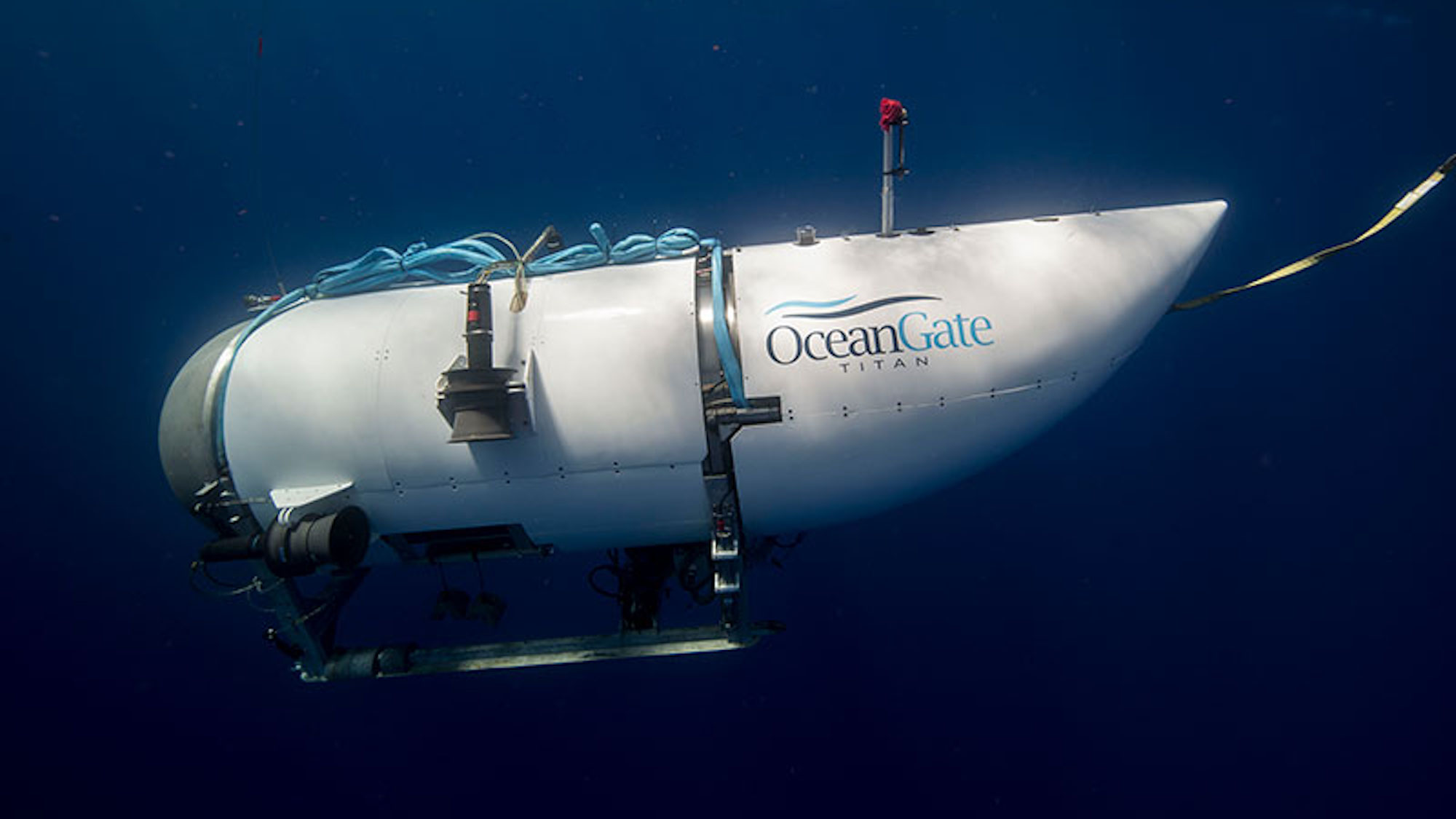

OceanGate announced on Thursday afternoon it believes a “debris field” discovered near the Titanic indicates all five passengers aboard OceanGate’s Titan submersible “have sadly been lost.” The experimental, uncertified vessel disappeared on Sunday during its 2.5 mile descent to briefly visit the historic ship’s remains. The Titan’s $250,000-per-seat inhabitants included a billionaire British explorer Hamish Harding, Shahzada and Suleman Dawood, Sulemanthe father-and-son scions of a Pakistani fertilizer company, French maritime expert Paul Henry Nargeolet, and OceanGate’s own CEO Stockton Rush.
“The debris is consistent with a catastrophic implosion of the vessel,” Rear Admiral John Mauger of the U.S. Coast Guard said in a news conference on Thursday.
[Related: Why finding the missing Titanic-bound tourist submersible is so challenging.]
“These men were true explorers who shared a distinct spirit of adventure, and a deep passion for exploring and protecting the world’s oceans,” reads a portion of OceanGate’s statement, as reported via CNN. “Our hearts are with these five souls and every member of their families during this tragic time. We grieve the loss of life and joy they brought to everyone they knew.”
The news arrives after more than four days of frantic international search efforts that spanned over 10,000 square surface miles, as well as North Atlantic ocean floor. On Monday, experts estimated Titan possessed roughly 96 hours of oxygen reserves—according to US Coast Guard officials’ calculations, the Titan’s oxygen likely would have run out around 7:10am EST on Thursday morning. But even with some leeway given to that estimation, recovery teams reportedly still needed as long as 8 hours to return an intact submersible to the ocean’s surface.
On Thursday afternoon, however, US Coast Guard officials confirmed a newly located debris field clearly originating from the missing vessel. The discovery came via video evidence collected by a remote operating vehicle (ROV) deployed by the Canadian vessel, Horizon Arctic. Among the international, state-of-the-art fleet also searching for Titan were at least nine other ships, including US and Canadian Coast Guard vessels, deep sea pipeline construction ships, and multiple other ROVs including the French vessel L’Atalante’s Victor 6000. On Tuesday evening, Canadian aircraft also reportedly detected “underwater noises” of potential human origin within the search area. Subsequently redirected resources failed to determine or locate the sounds’ sources.
[Related: Staggering 3D scan of the Titanic shows the wreck down to the millimeter.]
Mike Reiss, a tourist aboard four previous Titan trips including one to the Titanic, described signing waivers that “mentioned death three times on the first page.” On each voyage, Reiss alleged the submersible briefly lost communications with OceanGate’s surface crew. During his trip to the Titanic, Reiss also recalled the vessel being briefly carried off course by ocean currents as the compass appeared to malfunction, and spending three hours attempting to locate the wreckage despite being only 500 yards from the site.
In the years since its initial debut, submersible experts warned of “catastrophic” issues within Titan’s design, and voiced concerns regarding OceanGate disregarding standard certification processes. In a March 2018 open letter to OceanGate obtained by The New York Times, over three dozen industry leaders, oceanographers, and explorers “expressed unanimous concern” about the Titan’s “experimental” approach that they believed “could result in negative outcomes (from minor to catastrophic) that would have serious consequences for everyone in the industry.”
[Related: Watch never-before-seen footage of the Titanic shipwreck from the 1980s.]
“Your marketing material advertises that the Titan design will meet or exceed the DNV-GL safety standards, yet it does not appear that OceanGate has the intention of following DNV-GL class rules,” the letter reads, referring to the internationally recognized maritime industry regulatory organization. “Your representation is, at minimum, misleading to the public and breaches an industry-wide professional code of conduct we all endeavor to uphold.”
In a blog post published by OceanGate the following year entitled “Why Isn’t Titan Classed?,” unnamed authors argued, “Bringing an outside entity up to speed on every innovation before it is put into real-world testing is anathema to rapid innovation.”
“The entire OceanGate family is deeply grateful for the countless men and women from multiple organizations of the international community who expedited wide-ranging resources and have worked so very hard on this mission,” the company wrote in its statement Thursday. “We appreciate their commitment to finding these five explorers, and their days and nights of tireless work in support of our crew and their families.”
